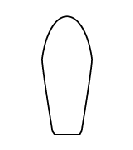Your Applications

Tablets (immediate and modified release)
Even for simple formulations such as tablets and capsules, dissolution can be very challenging when it comes to obtain a discriminative method, able to correlate with in vivo performance or addressing technical issues such as coning effect or poor API solubility.

Capsules, pellets
Some dosage forms are inducing a lot of analytical artefacts especially such as floating material or capsule interference. It is critical to use appropriate technical solutions to address these issues and ensure reproducibility of results.

API's, powders, granules
Although dissolution testing of powders dosage forms is described since years, its use for API characterization is growing together with the out-sourcing of raw material. It allows to compare the dissolution of both API and dosage form and to assess their relative importance.

Soft-gelatin capsules, suppositories
Due to their poor solubility, more and more API are formulated using lipophilic dosage forms. The presence of lipidic excipients may add complexity to the corresponding dissolution methods and require extra-attention when developing them.

Medical devices, stents, implants, coated lenses
Developing medical devices combined with drugs can be challenging due to the respective regulations. Having a good understanding of the behavior of both drug and device, expectations of the Authorities and available technical solutions allows to tackle such complicated testing with simple and robust methods.

Microspheres, nano-suspensions
Long Acting Injectables (LAI) like microspheres are part of a growing field related to the use of dispersed dosage forms for the administration of poorly soluble compounds or highly potent drugs. Being frequently used at low dose or with nano-particles as carrier, their in vitro testing may be very challenging with yet no standardized methods.

Injectable suspensions
Dissolution testing was thought only for oral dosage forms. Injection getting more and more importance for the administration of drugs, in vitro testing is now required to characterize in vitro the behavior of injectable products. Though it is very challenging to obtain discriminating methods using conventional solutions and without expertise.

Semi-solids, gels, creams
The characterization of topical forms such as creams and gels is gaining importance with the recent publications related to the TCS (Topical Classification System) with in vitro release testing becoming a key stone. However, the method to use may vary depending on the properties of the dosage forms and requires special attention for its development.

Transdermal patches
The methods to be used are well known but their development is not yet completely straight forward, especially because of the various types of patches and the relatively poor solubility of the API used.